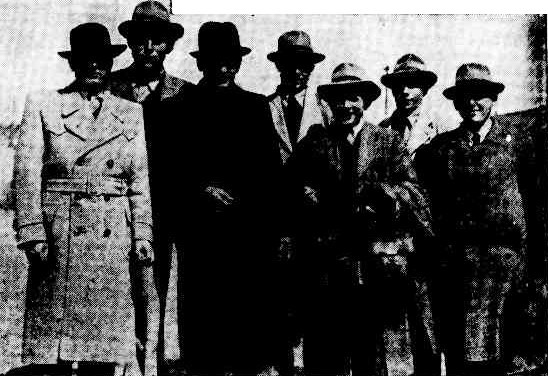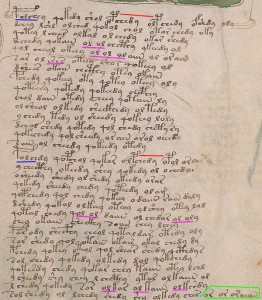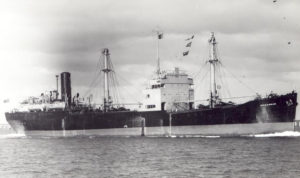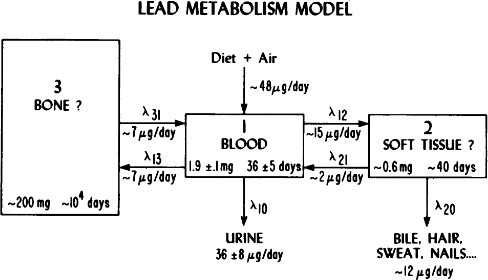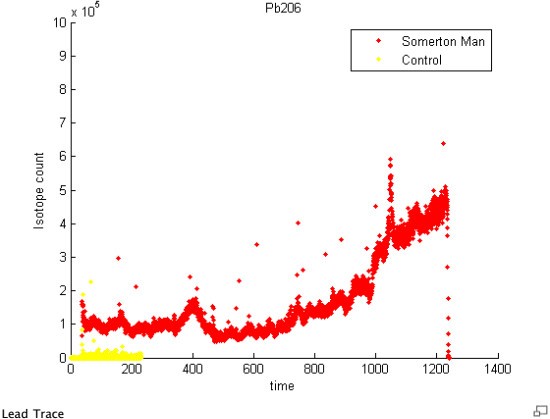This page is just a round-up of all the Risdon-in-1948-related research bits that ought to go onto the blog, but that don’t (yet) merit a page of their own. Maybe the Next Big Thing will be in here, who can tell?
Risdon wharf
Wharf workers who worked at Risdon were employed full-time by the Electrolytic Zinc Company, though were paid different hourly rates if they were working on the wharves or not: a policy which brought it, in July 1948, into conflict with the Waterside Workers Federation, which instead wanted to allow casual waterside workers to be used on the Risdon wharves, and were threatening to get the Seamen’s Union to blacklist throughout the Commonwealth any ships that loaded or unloaded there. (The EZ Co had managed to get Risdon exempted from counting as a part of Hobart port for 28 years.)
This war of words continued for a long time, with the Waterside Workers Federation’s Mr. E. Roach also alleging that “dangerous practices in loading and unloading are carried on at the Electrolytic Zinc Co.’s Risdon wharf and that the company has threatened with dismissal any man who protests“, allegations that the company loudly insisted were “entirely untrue“. (I haven’t found any specific details about Roach’s claims anywhere, but perhaps a different researcher will have more luck than me in this regard.)
The Stevedoring Industry Commission under Judge Kirby had ruled in favour of EZ Co: and the matter eventually went quiet, with claims that the matter was being put to one side pending a state election also being declared false.
Zeehan Closure
Byron Deveson turned up this article from the Advocate (Burnie) 30th June 1948 page 1
ZEEHAN SMELTERS TO CLOSE DOWN NEXT WEEK
Roasting at the Electrolytic Zinc Co’s smelters at Zeehan will be discontinued in a week’s time. The last rail load of concentrates will leave Rosebery tomorrow for the Zeehan plant, and it is expected that roasting of this ore, together with supplies on hand, will take about a week. The entire output of concentrates from Rosebery will in future be despatched to Risdon, where completion of extensions to the roasting and acid plants demand great quantities of concentrates. About 50 per cent of the production-500 tons weekly-has in the past been railed to Zeehan for reduction to calcines which have then gone to Risdon for the production of zinc. The recovery of sulphur, which is lost in the atmosphere at Zeehan, is a feature of the Risdon plant. The acid produced from the sulphur is used mainly in the manufacture of super-phosphate. The Zeehan roasting plant has been in operation for the past 12 years and employs approximately 30 men. For the time being they will be engaged in cleaning up calcine dumps and in the dismantling and removal of portion of the plant. On the completion of this work they can be readily absorbed at Rosebery.
Byron concludes that from the start of July 1948 until December 1948, 500 tons a week of zinc concentrate containing lead would have been sent to Risdon: which would have placed a lot of pressure on Risdon staff to get the flash roaster and acid plant commissioned as quickly as possible.
I also turned up an article from the 21st September 1948 Mercury reporting the Electrolytic Zinc Company’s Community Council AGM, where the general superintendent W. C. Snow said that “the new flash roaster and new acid plant were almost ready to go into operation. Much work had been done overseas in preparation for the ammonium sulphate plant, and he hoped that work would start at Risdon within a few months.” This should help to narrow down the range of dates when these expensive new facilities actually started being used at Risdon.
22 Migrants
Trove has numerous copies of articles about migrants arriving in Tasmania during 1948: many of these were on assisted passage schemes from the UK and Commonwealth that were designed to give Australia’s economy an injection of vitality in the difficult post-war years, and who typically arrived on big ships such as the SS Ormonde. There were also many other ships, such as those that arrived with ex-service personnel (e.g. the SS Strathavan).
One group of migrants, however, sticks out: 40 unmarried men and 9 unmarried women who came across from Australia on the RMS Taroona, arriving on the 15th October 1948. The 16th October 1948 Mercury described them as “Displaced Persons” and noted that “[e]ighteen men would work at timber mills on the North-East Coast, 22 men at the Electrolytic Zinc Co. at Risdon, and the nine women at hospitals in Hobart.”
The 16th October 1948 Launceston Examiner ran a very much fuller story:
TIMBER mill-hands-to-be, these Europeans who arrived at Launceston on the Taroona yesterday worked at a variety of occupations before the war.
One was a judge’s associate in Latvia. Odds are that if you try to pick him, you’ll be wrong. He’s on the extreme right. Others in the group are, from left: A tailor, engine driver. carpenter, locksmith, cook and fitter and turner. Most of the 18 who arrived at Launceston to work in northern timber mills spent about four years in Germany as prisoners. The ex-judge’s associate worked in Germany as a fireman. His wife and nine year-old son are in a transit camp awaiting a ship for Australia. Those for the north were a mixed group, including one Latvian, two Czechs, three Estonians, and 12 Ukranians. Twenty-two more men and nine single women for hospital domestic work went to Hobart by train.
Of course, I strongly doubt that the Somerton Man will turn out to be one of these timber mill hands: but might he be one of the 22 other displaced persons who started work at the Electrolytic Zinc Company at Risdon in mid to late October 1948? It’s entirely possible, and I personally wouldn’t like to be betting against that possibility just yet.
Nicely, it turned out that Cipher Mysteries commenter Helen Ensikat has been looking at this same group completely in parallel: and she found out that the Electrolytic Zinc Company held reasonably detailed files on its migrant workers. If you want to see these for yourself, they are AA59/1/256 (held in Hobart): who knows what these will tell us?
Displaced Persons
All of which leads me swiftly on to the larger issue of displaced persons. If you search the NAA’s catalogue, you’ll find a huge amount of stuff on the policies, pamphlets and propaganda targeted at displaced persons. For example, the nurses who ended up in Tasmania seem to be covered by the file “A434, 1950/3/3363” (16 Sep 1948 to 1950): while other documents describe the history (e.g. the Skaugum motor vessel, the Protea, and the Orontes, all bringing around 4000 to 5000 migrants per month in mid 1949) and even things like the construction and running of hostels – after all, these migrants had to live somewhere.
There were many ships that seem primarily to have brought displaced persons to Australia: for example, the Protea arrived at Melbourne on 30th September 1948, so our 22 could well have been on that ship (NAA ref: “PROTEA 21/8/1948”, held at Adelaide). Similarly the Wooster Victory (whose splendidly Wodehousean name will doubtless make Diane O’Donovan nearly choke with laughter) arrived at Sydney from Genoa on 6th September 1948 (NAA ref: “WOOSTER VICTORY 6/8/1948”, also held at Adelaide; while its nominal rolls are online here, filled to the funnels with Eastern Europeans). There was also the General Sturgess (mentioned in a file on Communist displaced persons in Australia), and the Kanimbla (arrived 11th October 1948), and doubtless numerous others.
The point of all this is that these two groups of displaced persons and migrants are towering haystacks for our Somerton Man needle to be lost in. So: not really a great place for us to try starting any search from, without some significant secondary hypothesis to work with. 🙁
